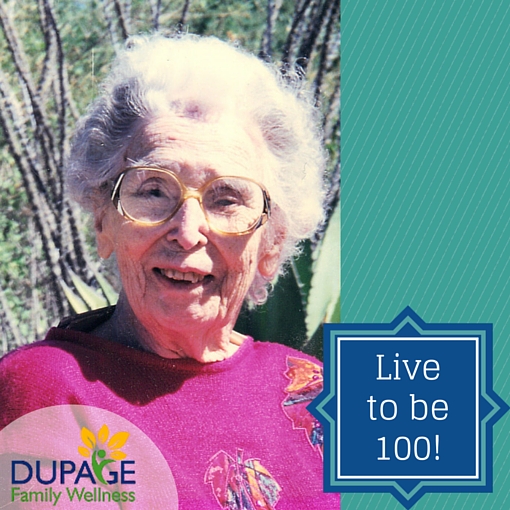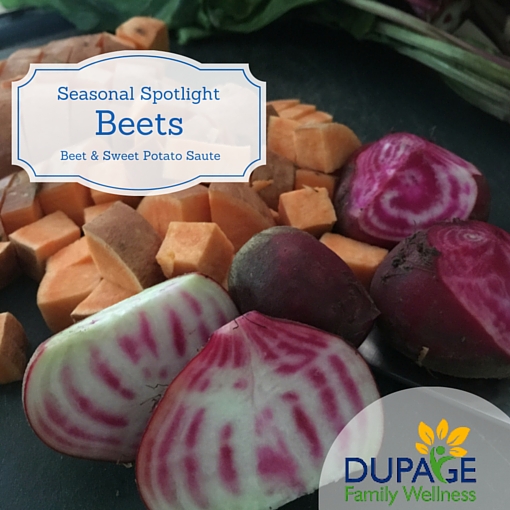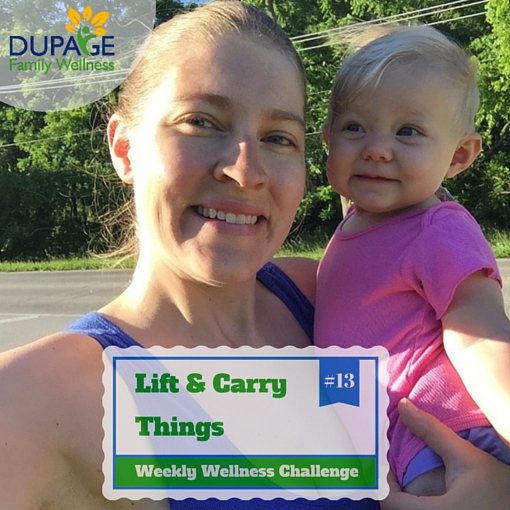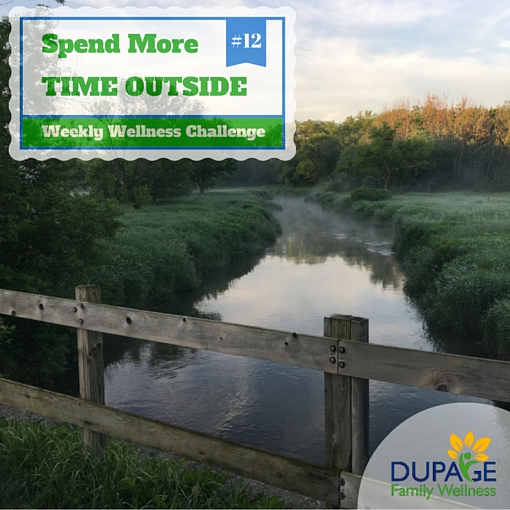
Recently I was fascinated by a podcast featuring breakthrough work in the area of human genomics to discover the common factors of populations that live the longest.
The term “Blue Zone” has been coined for the five regions that have a significantly greater concentration of centenarians, that is, people that live to be at least one hundred. There are five areas that have been named Blue Zones, which include: Ikaria, Greece; Okinawa, Japan; Ogliastra Region, Sardinia; Loma Linda, CA; and Nicoya Peninsula, Costa Rica.
Scientists have learned that both lifestyle and diet have the ability to turn on and off genes that contribute to longevity and robust health.
Common Lifestyle Factors
-
People move their bodies - a lot. They walk, and garden, and have an active life.
-
Healthy lifestyle is important to the entire community ! They have close social circles that reinforce healthy behaviors.
-
Time to de-stress daily is part of the culture. There are different traditions in each area including siesta (afternoon nap), a happy hour sort of tradition, or a daily time for prayer and meditation.
-
The centenarians are an integral part of their communities, often religious communities. These people were not alone but had neighbors, friends, and family frequently dropping to spending time with them.
-
The centenarians are committed to their families.
Common Nutrition and Diet Factors
- Stop eating when your stomach feels 80% full to avoid weight gain.
- Eat the smallest meal of the day as your last meal in the evening.
- Eat mainly plants and beans. Eat meat rarely and in portions of 3-4 ounces. In the Blue Zones, they only eat meat five times per month, on average.
- Limit alcohol consumption to 1-2 glasses per day.
- Eat mostly locally sourced food, including a lot of herbs.
What are the most common foods in each area?
Since the foods are locally sourced, they differ for each region.
- Ikaria, Greece, the foods known for longevity include: feta cheese, lemons, and herbs like sage and marjoram that they use daily in tea.
- The healthy staples in Okinawa, Japan are bitter melons, tofu, garlic, brown rice, green tea, and shitake mushrooms.
- In Sardinia, Italy they eat goats milk and sheep cheese, sourdough bread and barley, along with fennel, fava beans, chickpeas, tomatoes, almonds, milk thistle tea, and wine from the locally grown Grenache grapes.
- It may be surprising that one of the Blue Zones was actually in the United States. What are they doing right in Loma Linda California? Most members of this community are Seventh-day Adventists, so they avoid smoking, drinking, TV, movies, and other forms of media. Their diet follows biblical principles, thus focusing on whole grains, nuts, and vegetables with a small amount of meat and fish. It also includes avocados, salmon, beans, oatmeal, and eggs. They drink only water.
- In the Nicoya Penninsula of Costa Rica, one of the mottos is "Put an egg on it". In addition, they eat beans, corn, squash, papayas, yams, bananas, and peach palms.
Learning from My Great Grandmother
The photo is my great-grandmother, who lived from 1900 - 1999, almost 100 years with a good quality of life, and without chronic illness. I wish I could talk to her now. From what I can gather, she shared many characteristics of those in the "Blue Zones".
- She was always active, walking, swimming, and riding a "tri-cycle" even into her 90's.
- Along with my great grandfather, they grew a big garden, cooked from it, and shared it with the family.
- She was part of social groups that kept active playing games.
- She was active in her communities, and volunteered frequently.
- Family was important to her. She came to stay with us for a few weeks every summer, and when she was not here she always kept in touch.
Not only is she my longest living relative, she is also a good role model following these lifestyle patterns. In addition, she always had a positive outlook on life and was a joy to be around.
What Can We Take Away from the Blue Zones?
We can learn the following from the Blue Zones:
- There is no one size fits all diet that is best for everyone. Rather, we should eat the real whole foods that are found locally.
- We should listen to the signals of our body.
- We must realize that our lifestyle affects our health and pay particular attention reducing our stress and maintaining our community involvement.
Joelle Kurczodyna, NTP
 Our family has made a commitment to source our produce from local farms with organic growing methods. We invested in a share from a local Community Supported Agriculture (CSA) program and buy the rest of our produce from local farms at farmers markets. This has given us a chance to try foods that we don’t usually buy, and I have loved finding ways to prepare them and learn about them (follow on instagram @kfamilygoessustainable)
Our family has made a commitment to source our produce from local farms with organic growing methods. We invested in a share from a local Community Supported Agriculture (CSA) program and buy the rest of our produce from local farms at farmers markets. This has given us a chance to try foods that we don’t usually buy, and I have loved finding ways to prepare them and learn about them (follow on instagram @kfamilygoessustainable)
Our most recent CSA basket contained two varieties of beets, Chiogga beets and candy-stripe heirloom beets (pictured). People tend to have a love/hate relationship with beets, and I’ve always fallen more on the hate side, but I wanted to give these freshly grown beets a chance. They didn’t disappoint. I paired them with sweet potatoes, bacon, and the greens from the beet leaves (see recipe below) and the flavors were a perfect marriage of sweet and salty.
Besides their unique taste and bold color, beets pack a powerhouse of nutrition.
Beets are jam packed with vitamins and minerals including vitamin C, magnesium, iron, copper, and phosphorus. They also contain carotenoids, lutein, glycine, betaine, and beneficial flavonoids. With all of these nutrients, beets have been known to be beneficial for the heart, prevent certain cancers, stimulate liver and gall bladder function, prevent respiratory problems, prevent cataracts, be an aphrodisiac, and increase energy levels.
Beets are worth trying, especially if you find them freshly picked from your local farmer. Note: Beets are also be used as a dye, so they could turn your hands or counters red.
Beet and Sweet Potato Sauté
Ingredients
- 3-4 small to medium beets or 2 larger ones, peeled and cubed with greens
- 2 small to medium or 1 large sweet potato, cubed
- 4 slices bacon
Directions
- Cook bacon on stove top in large sauté pan (I use my cast iron skillet). Set bacon aside.
- Use the bacon fat to sauté the beets and sweet potatoes. Cook until beets and sweet potatoes are cooked through.
- Add beet greens and chopped bacon to your beet/sweet potato mixture. Cook until everything is warm and greens are cooked down.
- Remove from heat and enjoy!
Perfect as a side dish. Try cooking an egg on top for a delicious breakfast!
What are your favorite recipes using beets? Please share on our facebook page.
Joelle Kurczodyna, NTP
@kfamilygoessustainable on Instagram
Joelle and I are excited to announce that we have been working hard to create our own wellness program just for you!! There will be more details posted in the coming weeks, but we wanted to give you a heads up so you can get excited too! 
In this wellness program we will teach you how to eat, how to move, how to reduce stress, how to sleep better, and more! Basically, our goal is to help you become happier and healthier! We are thrilled to share our knowledge and experiences with you!
If you are just as pumped as we are about becoming happier and healthier- email me at This email address is being protected from spambots. You need JavaScript enabled to view it. and let me know. We are looking for a few lucky people to test out the program before the official launch date!
In Health
Dr. Jamie
Our challenge this week seems simple, but might take some creativity to figure out how to add more lifting into your life!
The most important takeaway this week is to re-frame the way you think about lifting things. Once again, we are going to think about what our ancestors used to do. There are so many modern day conveniences that allow us to avoid lifting anything. I encourage you to be conscious of these conveniences and when possible avoid them so that you use your muscles actively throughout the day!

Until a few weeks ago, I never really thought about any of this. Like most people in our country, I would have told you that if you want to lift things, go to the gym. I recently heard a story about having a beach ready body that really resonated with me. A beach body should not be one that simply looks good in a swim suit. A beach ready body is one that is "functional" at the beach. It is a body that if someone were struggling out in the waves, could run, swim, and pick up and carry the struggling person to safety. Often by default if you can do these things well, you probably also look good in the swimsuit, but that is an added bonus.
So what is the best way to get this “functional” beach body? Carry things, move your body, keep your muscles in your body active and engaged as much as possible.
Step 1) Move more- we already talked about this a few weeks ago- so I’ll link back to that article
Step 2) Carry things while you move!
One of the great things about carrying things while you move your body is that you will naturally shift constantly activating all sorts of different muscle groups. If you go to a gym and do a bicep curl machine for example, you work 1 muscle in 1 plane. This doesn’t translate very well to real life movement since there aren’t many situations in which you only have to control something that you lift in one direction with one muscle group. If you take a walk while carrying something you work your whole upper body in all 3 planes!
Lifting/carrying things doesn’t just mean objects- this can mean lifting your body as well. Throughout the course of the day, your muscles will be active a much higher percentage of the time if you are moving, walking, or even sitting unsupported (aka not sinking into a couch or Lazyboy where all of your mucles can just turn off). By sitting on the floor or a stool, you will constantly be shifting your body and keeping your core engaged!
So now that I’ve got you thinking a little bit differently about lifting things and keeping your muscles engaged throughout the day- what are some ways to do this?
- Carrying food- bring your own bags to the grocery store, and carry your food instead of using a cart
- Carrying children- I have been going for walks carrying my 20 pound baby instead of pushing her in a stroller. This way I get an upper body workout- and she does too! In the stroller, she can just turn off all of her muscles instead of supporting her head and torso.
- Carrying water- got a garden? Try watering manually instead of using a hose or a sprinkler
- Carrying supplies on your hike. If you are going for a walk- grab a sack or a pillow case and throw your water and snacks in there. While this is slightly less comfortable than a backpack, carrying it will involve constantly shifting positions and arms which allows different muscle groups to activate! At stopping points, you can swing your sack like a homemade kettle bell!
- Lift your body by doing something like rock climbing, or even playing on the monkey bars at a local park!
- Keep your muscles engaged by standing, sitting on the floor, or sitting in a backless chair/stool instead of sinking into a comfy couch.
- If you have a desk job, try a standing desk at work
- Laundry- lifting/carrying laundry baskets/clothes can be a great workout!
- Cleaning- instead of using a device like a vacuum or a broom, get down on the floor to clean floors
- Go swimming! This is a great way to engage muscles throughout your body (and important if you want that beach body ready that is able to rescue the drowning swimmer!)
What about the gym?
I am not trying to tell you not to go to the gym. I think that this can be a great place to activate your muscles. There are 2 things that worry me about the gym. First of all, I want to shift your thinking from sleeping/sitting 23+ hours a day and moving only during that 30-60 min gym session. I think that movement and muscle engagement should be something we are striving to do as much as possible while we are awake! My second concern about the gym is that people often do exercises that don’t translate well into real life movements. I want you to do movements that mimic things you have to do in real life- not simply getting on an elliptical machine or doing weight machines that isolate one muscle group at a time in one plane. The gym is a great addition to an active lifestyle, but should not be your only activity throughout the day!
So there you have it! I hope you are starting to change the way you think about movement and activity throughout the day. This week try to use at least one of our suggestions to “lift things”- including your own body more often! Let us know how it goes on our facebook page!!
What simple lifestyle change can help you sleep better, see better, and feel happier?
 Can you guess the answer? It is spending more time outside! Keep reading to learn why.
Can you guess the answer? It is spending more time outside! Keep reading to learn why.
In Dr. Jamie’s recent post titled "Move More - Move Better", I noticed that her suggestions (walking, hiking, gardening, etc) not only were to move, but to move OUTSIDE.
In general, the current generation spends less time outside than previous generations. This is one of many factors contributing to the decline of health in modern people.
How Does Being Outside Affect Your Health?
Sleep
Think about days where you are outside most of the day. You may have worked hard hiking in the woods or relaxed at the beach with friends. Either way, at the end of the day, you felt tired and probably had a great night’s sleep. This correlation between a good night’s sleep after being outside all day is not a coincidence. Our body’s circadian rhythms are how our bodies know what time it is. They let the body know when it’s time to wake up and when it’s time to sleep.
The most important factor controlling circadian rhythms is exposure to light. The natural light from outside is different from indoor light. To properly set the rhythms of your body, you need to spend time in natural light during the day and avoid unnatural light at night. By doing so, your body will naturally fall into the rhythm of nature and be ready to awake when the sun rises and be winding down when the sun sets. This provides the best opportunity for quality sleep.
I can personally attest to these improvements. My goal has been to be outside with my 5 month old as much as possible when she is awake. Once we developed this habit, her body almost immediately began a very regular sleep cycle and she’s been easily going to bed every night and sleeping great.
Myopia (Nearsightedness)
When I was a kid, only a few of my classmates wore glasses. Over the last couple of decades there has been a huge increase in myopia, specifically in industrialized countries. In biomechanist, Katy Bowman’s book Move Your DNA, she says
“Research shows that cultures historically without books show an increase in nearsightedness once reading or other hallmarks of a “civilized” environment (like night-lighting) are introduced. But more recent research specifically looking at reading shows that time spend outdoors might be the factor worth looking at instead.”
She goes one to talk about how the loads on your eyes changes depending on how far you are looking. If you are inside most of the day, even if you aren’t looking at a book or screen, you only look 20-30 feet at most. This close looking it causes the ciliary muscles in your eyes to contract. If you spend too much time looking at short distance, it does not give your eyes the chance to create a different load by looking far distances. The action of looking far away causes the relaxation of these tense eye muscles. Read more on myopia and the ciliary muscles.
General Well Being
In addition to these two specific examples, there are several studies that link being outside in nature to general overall health. Being in nature has been found to restore your focus, help you relax, be great for your brain, and increase overall feelings of happiness.
What are some practical ways to add more outdoor time to your life?
- Eat outside! You have to eat anyways, so why not eat outside. It can be a quiet breakfast or cup of coffee on the deck in the morning, lunch at a park with a coworker, or a family dinner outside.
- Move outside! Follow the examples in Dr. Jamie's previous post. Move More - Move Better. Instead of hitting the gym, spend more time moving outside in nature.
- Get a dog. I realize this might not be for everyone, but since getting our dog a year and a half ago we go on so many more walks out of necessity for him and overall enjoyment for the whole family!
- Meet a friend outside! Instead of meeting at the local coffee shop, find a park outside to chat, or take a walk instead.
- Take your phone calls outside! When I have to make one of those phone calls where I expect to be on hold for many minutes, I try to make the call while going for a walk. It makes the wait more enjoyable!
If you start paying attention to how much time you spend inside, you might be surprised. Use your ingenuity to figure out ways to get yourself outside.
Your challenge for the week: Try one or more of these ideas to add more outdoor time to your life.
Joelle Kurczodyna, NTP



 Our family has made a commitment to source our produce from local farms with organic growing methods. We invested in a share from a local Community Supported Agriculture (CSA) program and buy the rest of our produce from local farms at farmers markets. This has given us a chance to try foods that we don’t usually buy, and I have loved finding ways to prepare them and learn about them (follow on instagram
Our family has made a commitment to source our produce from local farms with organic growing methods. We invested in a share from a local Community Supported Agriculture (CSA) program and buy the rest of our produce from local farms at farmers markets. This has given us a chance to try foods that we don’t usually buy, and I have loved finding ways to prepare them and learn about them (follow on instagram 

 Can you guess the answer? It is spending more time outside! Keep reading to learn why.
Can you guess the answer? It is spending more time outside! Keep reading to learn why.